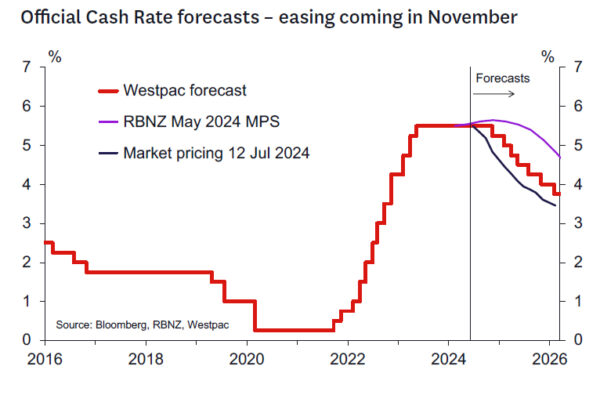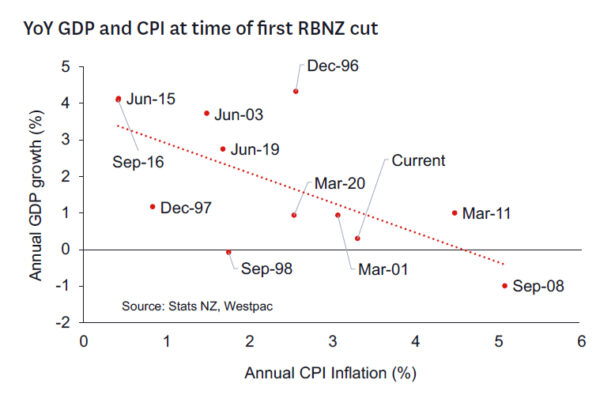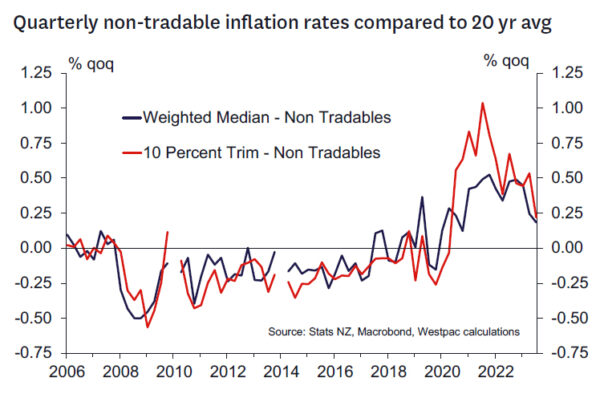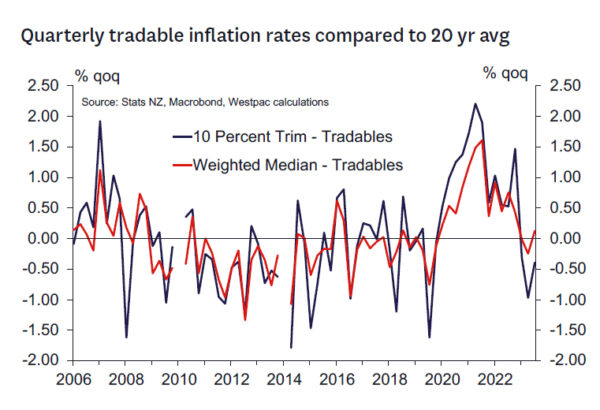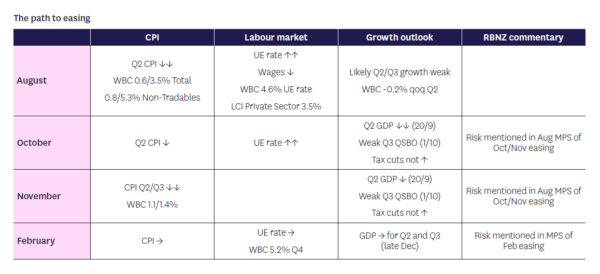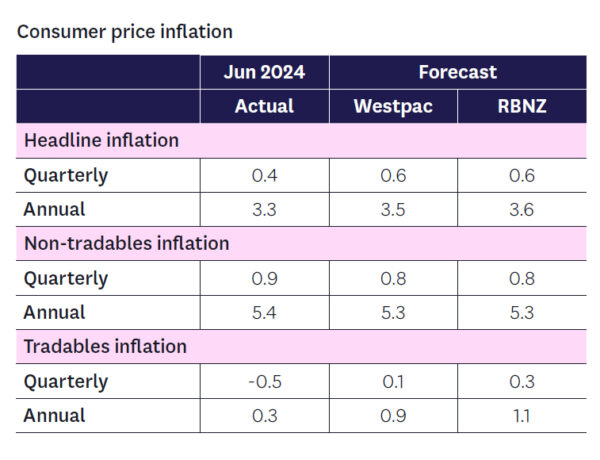- Today’s CPI showed some welcome reduction in headline inflation.
- Services sector inflation is easing only gradually.
- Recent activity data has suggested recessionary conditions for a few months now.
- The RBNZ indicated an openness to tempering the restrictiveness of conditions in July – today’s data gives them room to act on that strategy.
- We now see inflation is likely below 3% in Q3 and the path towards 2% seems more assured.
- Around a 30% chance of an earlier easing at the RBNZ’s in October Review now exists.
- The tone of the RBNZ August Statement, labour market, QSBO and GDP data due in coming months will be key in determining how live October is.
- We expect an initial 100 points of easing by mid-2025 in 25 basis point increments consistent with “tempering” restrictiveness.
- We continue to see a terminal OCR of 3.75 percent but will reach that point by early 2026 now.
The new OCR view.
We now expect the RBNZ to cut the OCR by 25 bp at the November Monetary Policy Statement. Thereafter we expect 25 bp cuts at each of the first three meetings of 2025 (February, April, and May) which will take the OCR to 4.5% by mid-2025. Thereafter we think the RBNZ will take a more cautious data dependent approach and reduce the OCR in 25 bp increments at the August and November 2025 Monetary Policy Statements bringing the OCR to 4% by end 2025. We see a final easing to 3.75% in early 2026 where we see the terminal rate.
This profile brings forward our previous OCR profile by around 6 months.
Rationale.
The RBNZ indicated in the July Review, unexpectedly, a willingness to consider “tapering” the degree of policy restriction. As we indicated in our review note, we thought the RBNZ’s marked change in tone reflected the much weaker data flow seen in the last few months as well as greater confidence that inflation will be under 3% by “the second half of the year”.
Today’s CPI data was a key part of the case for bringing forward OCR cuts from our longstanding view that easing would begin in February 2025 as explained in our recent note. As is noted below, todays CPI seems to vindicate the RBNZ’s view that inflation will soon be below 3%, giving them room to dial back restriction.
Additionally, we think the RBNZ will be revising down its near-term economic view. We see what now look like significant downside risks to our -0.2% Q2 GDP forecast given weak PMI data. Recent labour market indicators suggest upside risks to the unemployment rate (Westpac employment confidence, QSBO and weekly filled jobs). Its plausible the RBNZ is considering upgrading its unemployment rate forecasts again after a year or so of reducing them.
This lower inflation/growth combination looks consistent with some past episodes where the RBNZ has begun easing even while inflation was outside of the target range. These have been episodes where growth was weak and hence there was confidence that inflation would trend significantly lower given time and the usual lags. We think that the RBNZ is close to meeting this threshold now.
Risks and key immediate factors to focus on.
Our note last week describing the path to the first RBNZ easing still represents our view on the key factors to consider. Key will be the RBNZ’s revised forecasts at the upcoming Monetary Policy Statement on 14 August. We would expect these forecasts to show a significant downgrade in inflation and OCR forecasts. In the case of the OCR we expect something closer to the scenario they presented in May 2023. This implied a probability of an easing in October and a very likely easing at the November Statement.
The table below summarizes some of the key factors to watch in the event the RBNZ eases sooner than November. The upcoming labour market will be of key focus as will emerging growth indicators and Q2 GDP. We think the RBNZ will be very data driven in terms of the timing of the first cut.
NZ First Impressions: Consumers Price Index, June quarter 2024.
Inflation was lower than expected in the June quarter, with consumer prices rising by 0.4%. That saw the annual inflation rate slowing to 3.3%.
Discussion.
- Consumer prices rose 0.4% in the June quarter. That saw the annual inflation rate slowing to 3.4% (down from 4.0% in the year the March).
- The June quarter inflation result was below our forecast and the RBNZ’s last published forecast.
- Underlying the June quarter rise in prices were higher rents, as well as continued increases in insurance premiums and increases in road user charges. On the downside, we saw lower prices in areas related to travel, like airfares and accommodation. There were also lower prices for furnishings and video games.
- The key takeout was in the breakdown of tradables (imported prices) and non-tradables (largely domestic services). Tradables inflation is dropping back (-0.5% qtr / +0.3% yr) and was much weaker than we or the RBNZ had anticipated. That’s consistent with weak household spending and is likely to continue.
- However, domestic inflation continues to be sticky. Non-tradables prices were up 0.9% in the June quarter (+5.4% yr). That result was exaggerated by a large increase in road user changes. However, the underlying detail point to lingering domestic inflation pressures. In part that’s due to continued increases in insurance costs, as well as items like energy prices. But domestic price pressures remain widespread – prices for domestic services more generally are continuing to rise at a solid pace.
- Core inflation measures (which track the underlying trend in inflation) illustrated the dichotomy in the economy. Overall core inflation measures have dropped back from over 4% to around 3.5% (for example, inflation excluding food and energy has slowed to 3.4% this quarter). However, while measure of tradables inflation have fallen to low levels, measures of domestic inflation are still falling gradually and continue to run at rates of over 5%.
In the detail.
- Insurance costs (3% of the CPI, included in the ‘Miscellaneous goods and services’ group) were the largest contributor to inflation in the June quarter, rising by 3.1%.
- Rents were up 1.2% in the June quarter, and are up 4.8% over the past year.
- There was also a 0.9% rise in the cost of purchasing a new home (aka. construction costs). That was rise was stronger than we’ve seen in recent quarters and came despite a slowdown in construction activity. It will be worth watching to see if this strength continues.
- Household energy costs (3% of the CPI) rose 4% this quarter, underpinned by the increases in electricity costs.
- On the downside, passenger transport costs (3% of the CPI) fell 3% in the June quarter, with seasonal drops in both domestic and international airfares. Similarly, prices in the recreational and culture group (10% of the CPI) were down 4.5%, mainly as a result of lower holiday accommodation costs.
- We also saw softness in prices for imported items like furnishings.




